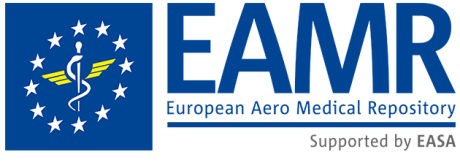
The European Union Aviation Safety Agency (EASA) launched the European Aero-Medical Repository (EAMR), adding an additional tool to enhance flight safety by allowing traceability of commercial pilots’ medical certificates. The repository is intended to help aero-medical examiners (AMEs) to fulfil their obligations and provides support to the National authorities with their oversight and administrative work in the field of aviation medicine for commercial aviation.
Following the Germanwings accident both the Germanwings Task Force led by EASA and the French Bureau d'Enquêtes et d'analyses pour la sécurité de l'Aviation civile (BEA) recommended to find a balance between medical confidentiality and public safety and to create a European aeromedical data repository to facilitate the sharing of aeromedical information and tackle the issue of pilot non-declaration.
The EAMR enables aero-medical examiners (AMEs), aero-medical centres (AeMCs) and medical assessors (MAs) of EASA Member States’ National Competent Authorities (NCAs) to exchange information regarding the medical certification of commercial pilots.
AMEs, AeMCs and the MAs of the NCAs can access information on commercial pilots’ medical certificates and any historical changes to the status of these medical certificates, as well as a minimal set of data to allow positive identification of the applicant, while respecting patient confidentiality and ensuring protection of personal data. In accordance with ARA.MED.160 Exchange of information on medical certificates through a central repository, the NCAs, AMEs and AeMCs shall use the EAMR to exchange medical certificate information.
Although the EAMR portal was technically ready to go live in early 2020, due to the COVID-19 pandemic not all EU Member States were able to complete the training, as many of the medical assessors and AMEs were involved, as medical doctors, in the management of the COVID-19 pandemic.
The use of the EAMR requires training of the AMEs and AeMCs and a gradual implementation is considered with an envisaged mandatory use of the EAMR by all EASA Member States by October 1, 2021.
More information on the EAMR and access to the training material is available on EASA’s website.